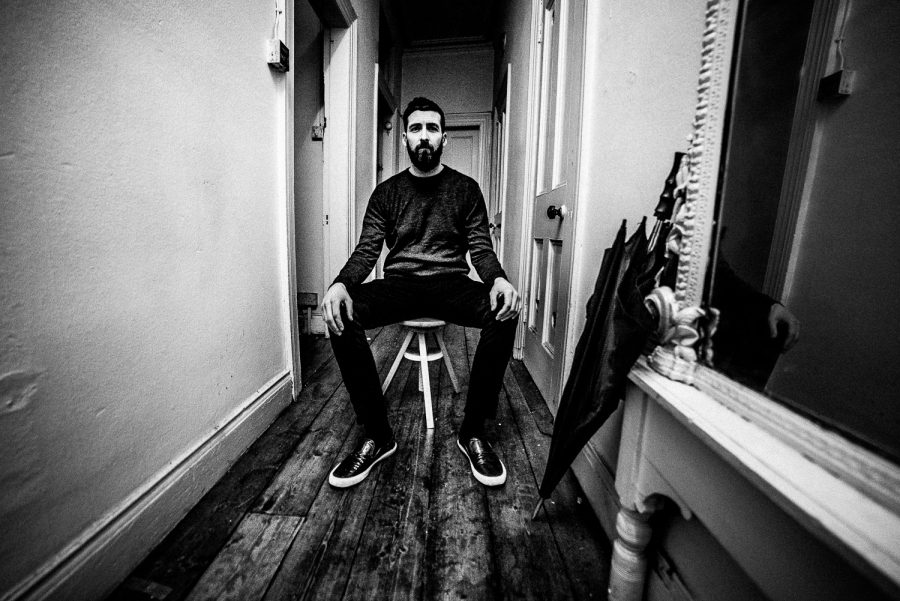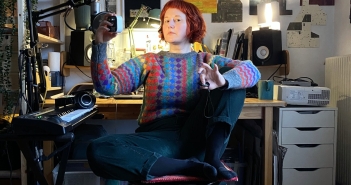In an attention economy devised to distract and occupy consciousness, the exponential flow of information generates continual flux in its wake. The novelist William Gibson recently observed that this leaves us with ‘insufficient now to stand on.’[i] How can art and music respond in this context?
Gibson’s Neuromancer (1984) foresaw and forewarned about the development of emerging digital technologies, virtual realities, and massively powerful corporate entities that control data.[ii] As a result of information overload and digital distraction, a deficit of attention and meaning has become more pronounced. Our present digitally-accelerated culture is akin to that which Jean Baudrillard outlined, where ‘there is more and more information and less and less meaning.’[iii]
This creates a challenge to remain present – as a seemingly-infinite cascade of data continually threatens to undermine the stability of the present. A culture of information saturation mediates social relations in digital space and the ‘meatspace’ of the physical world – a relentless barrage frequently driven by the force and logic of late-capitalism and the free market – where profit is the highest good.
These mediated dimensions of reality relentlessly seek to commandeer our attention and shape our perceptions (Cambridge Analytica, etc.). Is it possible to be free in this context? How to live with our extended technological prosthetic nervous system without it dictating the focus of our lives? How to resist corporate conglomerates that monitor and accumulate data to convert this into capital and power?
In order to resist the extractive and manipulative aspects of these hyperrealities, space is needed to comprehend experientially where we are at – so that we can remain autonomous. If we can recalibrate our connection to the digital spectacle, we may disentangle ourselves from it and gain the freedom to address some of the global issues we face: climate change, ethnonationalism, inequality, neo-imperialism, and so on.
‘The purpose of all art is magical and evocative’, said William Burroughs, a means to evoke ‘the real magical forces that sweep away the spurious’, and where a concert can be ‘a rite involving the evocation and transmutation of energy’ connected with the engagement between audience and performers as well as the use of repetition and volume.[iv] The role of sound in altering consciousness subtly and profoundly fascinates me, especially in electronic music, minimalism, and underground rock.
Burroughs’ development of the cut up technique (with Brion Gysin) resulted in experimental art and writing that sought to engage and alter conscious also – to break the spell of a consensus reality generated by mass media imagery. I endeavoured to refresh and update these aspects in my own work.
In this context, I devised an ecstatic, multisensory experience titled Digital_Ritual for amplified and processed voice, electronics, tape, and visuals. Perhaps, it is possible to reconfigure consciousness through the same digital technology that engenders the ‘continuous partial attention’ that increasingly disperses and divides our attention.[v] This counter-magic includes digital-lysergic imagery from digital and Internet culture: GIFs, esoteric Instagram hashtag searches, laptop and smartphone cameras, occult Facebook groups, and endlessly scrolling screens.
The intention here is to re-orientate, rather than disorientate, a participant. Both audio and video are subjected to minimalist techniques of composition: repetition, stasis, steady pulses, and variation of sonic fragments. The acoustic and psychoacoustic components of sound are enhanced in the music by using a just intonation tuning system – where all intervals are tuned in whole number ratios. There is improvisation, randomness and noise to engage consciousness also.
Musically, the focus is on density, rhythm, texture, and timbre rather than common-practice voice-leading or harmonic progressions. This evokes an esoteric (‘hidden’) aspects via the subconscious effects of provocation of ANS responses. The techniques used engage autonomic nervous arousal (ANS) of psychophysiological (body and mind) processes: affect through density and volume,[vi] perceptualization via timbre,[vii] and rhythmic entrainment from steady pulses held at length.[viii]
This is intended to evoke, and to learn from, what Gilles Deleuze terms, ‘the affects, perceptions, and sensations to which we can be subject’ – rather than being concerned with communication of a fixed, unitary meaning.[ix] A profound experience of what it is to be alive is as resonant and significant, if not more so, than a conception of why we are here.
Judith Becker outlines that ‘the strongest version of happiness in relation to musical listening and an example of extreme arousal is ecstasy.’[x] The ecstatic often bends and blurs our constructs and boundaries to provoke consciousness to new states by bringing us to our conceptual – the sublime – and sensorial limits. Thereafter, the reception of a work is differentiated and enhanced by a participant’s consciousness.
Creating experiential spaces and states through art allow us to know how it is to be alive in all its weirdness, wildness, wideness, and wonder on a deeper-than-surface level. To expand consciousness beyond those narrower modes of operation which dominate when we are engaged in our daily struggles for survival, or our endless scroll through our myriad screens of cascading data.
/// Recalibrate attention to the fullness of now /// Experience the inexplicable /// Reset the operating system ///
Digital_Ritual happens at Smock Alley Theatre, Dublin on 20 February 2020 @ 9pm. Tickets: https://smockalley.ticketsolve.com/shows/873612060 ///
Paul Gilgunn is the music editor of Cassandra Voices, and a former Musician of the Month. For further information on Paul’s work visit: https://gilgunn.org
Facebook: https://www.facebook.com/Paul-Gilgunn-900819373459647/?ref=br_rs
Instagram: https://www.instagram.com/paulgilgunn/
Twitter: https://twitter.com/PaulGilgunn
[i] Joshua Rothman, ‘How William Gibson keeps His Sciene Fiction Real’, The New Yorker, 16 December 2019, https://www.newyorker.com/magazine/2019/12/16/how-william-gibson-keeps-his-science-fiction-real
[ii] William Gibson, Neuromancer, London: Victor Gollancz, 1984.
[iii] Jean Baudrillard, Simulacra and Simulation, Chicago: University of Michigan Press, 1994.
[iv] William Burroughs, ‘Rock Magic: Jimmy Page, Led Zeppelin, and a search for the Elusive Stairway to Heaven’, Crawdaddy Magazine, June 1975, reproduced in Jon Bream, Whole lotta Led Zeppelin: the illustrated history of the heaviest band of all time, Minneapolis: Voyager Press, 2008, pp. 166-167.
[v] Linda Stone, a former Apple and Microsoft consultant, coined the term ‘continuous partial attention’ in 1998. For an overview, see Eileen Wood and Lucia Zivcakova, ‘Multitasking: What is it?’ in Larry D. Rosen, Nancy Cheever, L. Mark Carrier (editors), The Wiley Handbook of Psychology, Technology, and Society, West Sussex: John Wiley & Sons, 2015, p. 406.
[vi] Luke Harrison and Psyche Loui, ‘Thrills, chills, frissons, and skin orgasms: toward an integrative model of transcendent psychophysiological experiences in music’, Frontiers in Psychology, July 2014, Volume 5, http://journal.frontiersin.org/article/10.3389/fpsyg.2014.00790/full, accessed 15 February 2020.
[vii] Cornelia Fales, ‘The Paradox of Timbre’, Ethnomusicology Winter 2002, University of California: Santa Barbara, 2002, pp. 56-95.
[viii] Martin Clayton, Rebecca Sager and Udo Will, ‘In time with the music: The concept of entrainment and its significance for ethnomusicology’, 2004, http://www.open.ac.uk/Arts/experience/InTimeWithTheMusic.pdf, accessed 19 February 2020.
[ix] Gilles Deleuze quoted in David Kelly (editor). Encyclopedia of Aesthetics V.1, Oxford University Press, 1998, p. 518.
[x] Becker, Deep Listeners: Music, Emotion, and Trancing, Indianapolis: Indiana University Press, 2004, p. 79.




